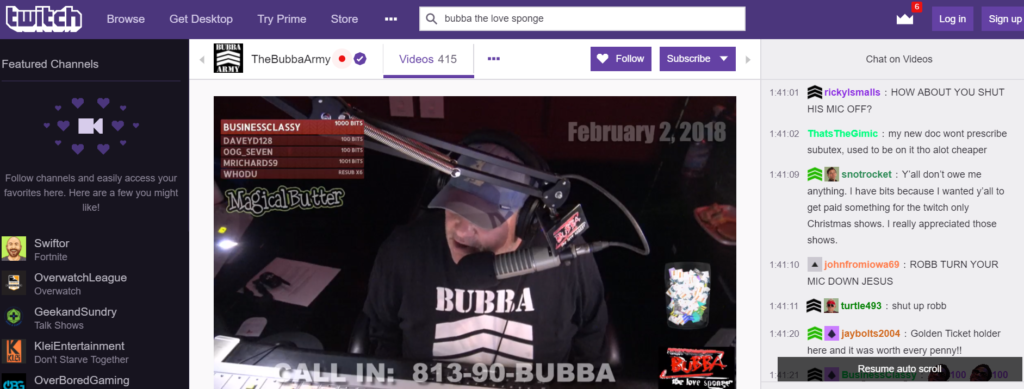
As we see in market research studies, consumers are, in fact, loyal to radio stations. And in most markets, there is a handful of stations that truly engender a strong sense of “stickiness.” But much of this is due to the audience’s relationship to personalitiies associated with the brand. The really stellar DJs, hosts, and shows are able to move their audiences from station to station in the same market.
Many years ago, Emanuel Rosen – author of “The Anatomy of Buzz” – keynoted a Jacobs Summit. The book was one of the first that detailed the viral effect of certain brands. And Rosen’s contention even back in the ’90s was that “People talk about other people.”
But sometimes, the ratings tend to overshadow and even dull these relationships between audience members and personalities. In PPM, we see a a few meter holders spending inordinate amounts of times with stations – or shows – and the conclusion is often that there’s something aberrant about this behavior. It is explained away that perhaps these panelists strapped their meter on the family dog or simply are odd because of their unusual amount of heavy listening to a single station or show. It is common to view this people as “outliers” – those well outside the norm of the average listener.
But that fact is, these people exist. They aren’t just P1s to a station or a show – they are what is often referred to as “Super P1s.” But measuring their impact in just quarter-hours discounts their true value to a brand.
Sadly for radio companies, stations, and the personalitiies or shows themselves, these incredibly fanatical fans have no real outlet for their loyalty. Sadly, most will never receive a meter or a diary. And aside talented and magnetic personaliities making extra cash on live reads and appearance fees, there’s only a small number of shows good enough to succeed in syndication. Essentially, that’s been the only way to truly “scale a show” – offer it to other stations in other markets.
But what about personalities and shows that are so intensely local (or an acquired taste) that expanding their boundaries to other markets, states, and even countries falls flat or fails to replicate the home market buzz? Few personalities and the staitons that hire them are able to cash in on their legions of uber P1s.
If we look beyond the confines of radio frequencies and even streams, only podcasts appears to be a bona fide revenue opportunity. But most shows are simply repruposing their daily shows into podcasts, and most station sales teams struggle to convert their downloads into revenue.
But looking beyonnd the usual distribution outlets and so-called “non-traditional revenue” opportunities, there are innovative things happening outside “radio land.” If you have teenage kids, there’s a good chance Twitch is being consumed on a device in your home. Started back in 2011 as Justin.tv (yes, by a dude named Justin), the original streaming platform started growing primarily as a video game live streaming channel.
You may not think it’s especially entertaining – or even weird – for people to watch other people play “World of Warcraft,” but then you’re not considering that for centuries, mankind has paid money to be spectator at games – from the ancient Colloseum days to thousands at Fenway Park watcing a baseball game.
Historically, we spend our time watching such riveting sports as bowling, golf, and even curling on television. In fact, observing poker games has become big business. So, watching video game players – why not? Especially if you’re eager to learn the techniques that can make you a more accomplished player.
Over the years, Twitch’s numbers have skyrocketed, and are now truly eye-opening. As of last February, here are some of Twitch’s critical numbers, according to a site called DMR (no, not that DMR):
100 million+ monthly unique users
15 million daily active users
2.2 million monthly Twitch “broadcasters” (yes, that’s what they’re called)
Twitch users spend an average of 106 minutes per day.
Nearly half spend 20+ hours a week
These metrics make Twitch one of the most visited sites on the Internet. But here’s perhaps the most amazing stat about Twitch. In 2014, Amazon bought Twitch for a reportedly $970 million. Today, Twitch is a wholy owned subsidiary of Amazon, but Jeff Bezos’ company has quietly helped transform Twitch into a juggernaut.
And Twitch is not just about watching video games. Traditional radio hosts are beginning to get involved. In fact, a name we all know has been on the Twitch platform since late last year – Bubba the Love Sponge.

And while the rhythm and regimen involved with supporting an around the clock streaming video channel is quite a bit different than airing a four-hour radio show, cutting a promo, and uploading the podcast, the viability of a great broadcast radio show figuring out Twitch appears to be more than doable.
Another key component of Twitch is its incessant interactivity with these fans, constantly messaging each other, engaging with one another, and chatting with Bubba and his team. That’s a big piece of the appeal of Twitch for its massive user base. The steady dialogue is always plastered on the screen, making the audience the so-called “12th man,” enjoying a bigger role than passively cheering from the sidelines.
So, what’s the point? Aside from being a new media outlet for radio personalities, where’s the payoff?
Well, for well-estalished, talented radio personalitieis there’s money in this platform – potentially a lot of it – and that’s where the mega-fans we talked about earlier come into play. In just a few months, Bubba has amassed several thousand paying customers on Twitch, each ponying up at least $4.99 each month to watch his show, observe his antics, and drop in on his life.
And there are other ways revenue is generated on Twitch, too – an extensive merch store and even a “Wish List” feature where his “army” can buy Bubba everything from paper towels to Fitbits. Those transactions – all powered by Amazon – are made even more sealmess for Prime members.
In essence, Twitch marries radio to reality TV, as well as the idea of being able to voeyuristically watch a favorite personality or show as they go through their daily routines, their prep sessions and meetings, and even trips to the grocery store. Again, some of you reading this may wonder who in their right mind would want to watch your morning team go to Starbucks, eat dinner in a restaurant, or try axe throwing in a local bar. But for iconic personalities that have built up strong, loyal followings, the Twitch platform appears to be a mechanism that activates the small but powerful fan(antical) base.
Radio operators often evaluate their business models through the old lens, based on the confines and limitations of the terrestrial mother ship and the limited commercial load. But “thinking outside the platform” opens radio up to the notion that video, streaming, podcasts, subscriptions, and ecommerce could all be a part of an expanded revenue-producing franchise open to great personalities and shows. Today, these “extras” are positioned now as afterthoughts that are rarely designed or executed professionally and profitably. On a platform like Twitch, they are pathways to generating revenue.
The success of Twitch – and Bubba’s short run on it – is more evidence that radio’s digital future may not emanate from the usual sources or outlets. As more and more startups experiment with streaming audio, video, and its adjuncts, broadcast radio and its bigger than life personalities could be poised to become a more integral part of new media platforms, rather than desperately clinging to the traditional model and hoping to raise the rates 5%.
So, when you look at your radio station and your big mornming show, what’s on your wish list?
P.S. If you want to discuss Twitch and toss around ideas, contact me: [email protected]
Here is the key to the personalities shown at the top of this post.
Top row: Brooke & Jubal, Bobby Bones, Howard Stern, Pierre Robert
Second row: Jennifer Wilde, Terry Gross, Nessa, Bob Stroud
Third row: Big Boy, Elvis Duran, D. L. Hughley
Fourth row: Colin Cowherd, Dave & Chuck the Freak, Peter Sagal
Bottom row: Tom Barnard, The Men’s Room, John Boy & Billy
- Media And Technology In 2025: Believe It Or Not! - April 18, 2025
- In Radio, You Just Never Know - April 17, 2025
- The Secret To Making A Great Podcast (And Great Radio) - April 16, 2025




Leave a Reply